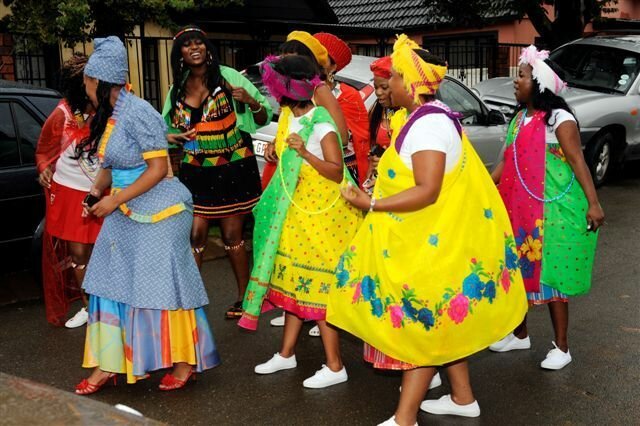The Vatsonga are an ethnos made from dispersed, independent clans round the SouthEastern a part of Africa. The Vatsonga people in African country|African country|African nation} comprise of a mixed heritage of identities. They descend from either one or a mix of Tonga/Copi, Tswa, Kalanga, Rhonga, Nguni, and/or Sotho, with most maintaining an instantaneous link to other groups around countries like Malawi, Tanzania, Mozambique, Zambia, Zimbabwe, or Swaziland respectively.
The origin of the word “Tsonga” is from Xitswa, Xitonga, and Xirhonga, which are the oldest and most generally spoken languages of the Xitsonga language group. in line with Erasmus (1995, p. 199) early tribes of the Vatsonga were already within the Mozambique area and round the Kruger parkland by 697A.D. (Image Source: Junod 1913) the subsequent points sum up what’s meant by “Tsonga”, “Vatsonga”, “Vutsonga”, and “Xitsonga”:
• Where language is worried, the word “XiTsonga” was favoured as a grouping including Xitswa and Xirhonga to classify a collection of related dialects under a typical learning system labeled which was labelled “Tswa-Rhonga”. Xitsonga is therefore a standardised language very similar to Chivenda, isiZulu, isiXhosa et al, but the first language spoken by the Tsonga people encompasses various tribal dialects which form the idea of Xitsonga as a unified language.
• The Xitsonga language has been around for a awfully while, and was already developed during the 1500s. One great source of knowledge about the age of the Xitsonga language exists within the names of the forefathers of the Vatsonga clans. the thought that the Xitsonga language was mysteriously created during the 1800s is commonly used as a tool to discredit the cultural historical of the Tsonga people and therefore the development of their language.
Missionaries like Henri A Junod attempted to induce a unified name for a language which they intended to use a a basis for teaching the Christian doctrine, so that they lived amongst the people to find out about their social and psychic life and came to be told that they identify by various tribal names supported location or the name of an ancestor, but that they converged on the name T^onga, including such names as Varhonga, Vadjonga, Vadonga, and Vatsonga. The language was finally registered as “Xitsonga” within the Constitution of African nation.
• Vatsonga are a gaggle of clans that have assimilated into a specific cultural identity that began to create from a time during the good people migrations out of eastern Africa. they are doing not follow the standard system of a central king or queen, and every clan is governed through independent tribes that coordinate on mutual affairs from time to time. Tsonga ancient customs also hold that social leadership doesn’t cross territorial or tribal boundaries, such the old saying “Vukosi a byi peli nambu” to mean “Kingship doesn’t cross into another tribe‟s territory”. This was even evidenced during the reign of the Gaza Kingdom because subject tribes retained chieftencies of their land and customs although they were forced to pay tax and tribute by the spear. this can be more of the initial African way of doing things before emperialism shipped to African soil and re-organised the social, political, and cultural landscape of the continent.
• When one uses the word Vutsonga, they’re actually taking into consideration the entire of Africa, effectively concerning the “South and South-Eastern part” of it. The term is employed by Vatsonga groups that talk a dialect of the Xitsonga language to visit themselves as people of the East. These people have over many centuries assumed a selected social and psychic way of life. Vutsonga also refers to the way of lifetime of adhering to Tsonga customs and traditions.
• There are five main Vutsonga language groups: (1) Xitonga (xa le Zambezi na Nyembani), (2) Xirhonga (xa le Maputo), (3) Xitswa (xa le Nyembani), (4) Xitembe (xa le KwaZulu-Natal), and (5) Xitsonga (xa le Afrika Dzonga, Limpopo). All tribal sub-dialects link back to those main groups. Standard Xitsonga may be a product of of these language groups, while the Xitsonga ((Ririmi ra manana) phonetic system and grammatical forms are academically supported the permutations of the N‟walungu (Van‟wanati, Valoyi), Vahlengwe, Vahlanganu, and Vabila groups (compare with: Junod 1912, p. 470─473).
• The word “Rhonga” is principally used round the coastal areas of Mozambique to talk to the Tsonga people around that area. “Vurhonga” has been accustomed talk over with “the East”, or “the Dawn of the East”. Varhonga are and can always remain integral a part of the history of theTsonga people.
• The Vutsonga way of life incorporates one particular traditional strategy of naming their groups consistent with the geographic location in relation to other Vatsonga groups or some unique quality about the group. This strategy effectively made it hard for foreign groups to eliminate or otherwise assimilate the Vatsonga group in entirety. Also, Tsonga customs hold the idea that when someone “crosses over” to land belonging to a selected Vatsonga group, that person is sure to the social and cultural structure of that group and may follow the foundations of the tribe’s chief or traditional leader.
• Vatsonga tribes (dispersed, independent villages) have regularly come under invasions from various groups within the past, like the Arabs, the Portuguese, Banguni, Vhavenda, and Boer trekkers between the year 1200 and 1900 (a seven hundred year period) but they need largely been able to preserve their independence.
• The Vatsonga have largely managed to sustain their Vutsonga cultural identity and traditional practices despite many attempts to interchange these. The Vatsonga people in African country, Mozambique, Zimbabwe, and Swaziland, as an example, share a heritage stretching over 800 years. The people had a typical establishment with similar cultural practices and a related group of languages before the Mfecane occurred and before the Berlin Conference divided Mozambique, South Africa, and Zimbabwe by national borders.


